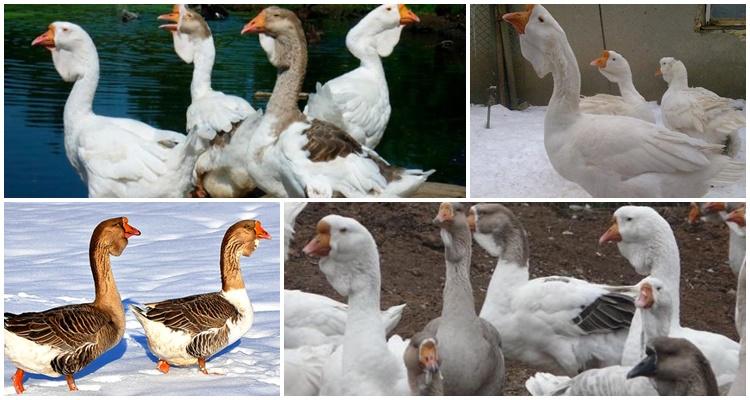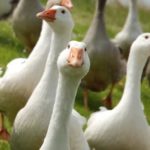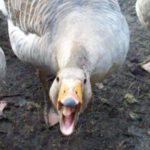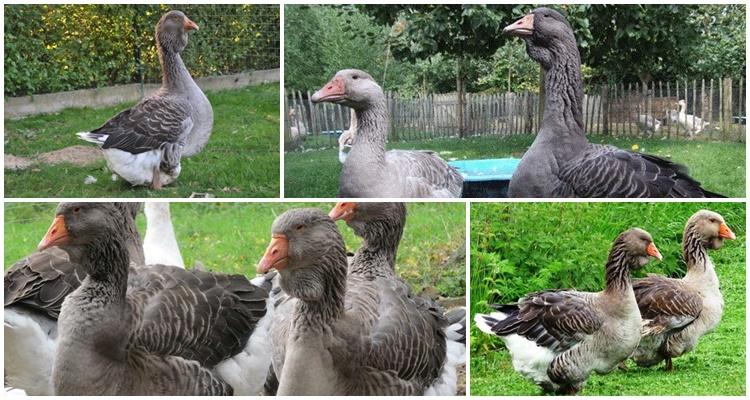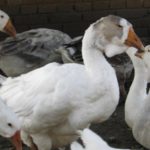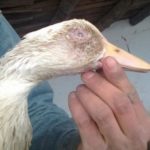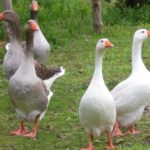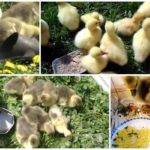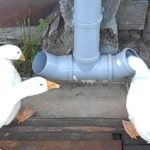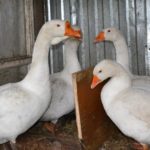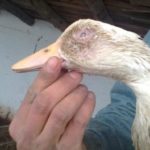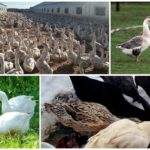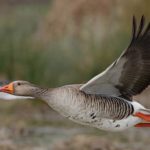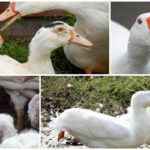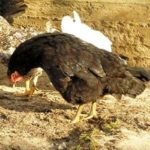Salmonellosis belongs to a group of common infectious diseases that are diagnosed in poultry. This pathology can be successfully cured if timely measures are taken. But without treatment, the disease provokes the death of up to 70% of young animals. In this regard, it is important to know how and with what you can treat salmonellosis in goslings, as well as ways to prevent infection.
How does infection occur?
Salmonellosis develops as a result of infection of the body with salmonella. Infection occurs through:
- litter;
- infected bird or person;
- water.
In some cases, infection is possible by air.The risk group includes young animals and birds with weakened immune systems.
Symptoms of the disease
The nature of the disease directly depends on the state of the immune system. The incubation period of infection, during which there are no pronounced symptoms of salmonellosis, lasts from 12 to 36 hours. But in some cases, the pathology is hyperacute. With this type of development, goslings die 2-12 hours after infection in the absence of pronounced symptoms of infection. About a day after infection, the following signs of infection are observed:
- decreased appetite;
- general and muscle flaccidity;
- increased drowsiness.
After 1.5 days, the following symptoms join the general clinical picture:
- conjunctivitis, accompanied by gray discharge;
- labored breathing;
- lacrimation;
- flow of mucus from the nose;
- diarrhea;
- throwing back the head;
- ataxia.
When the body is infected with salmonella, goslings experience a staggering gait. As the pathological process progresses, the activity of the central nervous system is disrupted. In this case, the goslings fall on their side, and their limbs begin to move involuntarily.
Also, salmonellosis often occurs in a subacute form. In this case, a similar clinical picture is observed. But these symptoms appear gradually over several days.
The danger of this disease is that in the absence of adequate treatment, salmonella spreads throughout the internal organs, causing tissue necrosis in the liver, spleen, lungs and heart.
Diagnostics
Due to the fact that salmonellosis does not have characteristic symptoms (a similar clinical picture is observed with other helminthic infestations), the disease is detected based on the results of a comprehensive examination of the affected bird. The final diagnosis is made after pathological and laboratory studies.
Feeding during treatment
The success of the therapy largely depends on the state of immunity of the infected bird. Therefore, if salmonellosis is suspected, goslings are transferred to ready-made feed. During this period it is prohibited to give:
- stale feed;
- eggs;
- fermented milk and dairy products;
- cottage cheese.
The bird also needs to be provided with constant access to drink. It is recommended to boil the water first, as the supplied liquid may contain salmonella and other parasites.
Simultaneously with nutritional correction, it is important to take measures aimed at preventing the spread of the disease. To do this, poultry houses are regularly disinfected and the litter is changed.
How to treat salmonellosis in geese
For salmonellosis, only drug treatment is used. Traditional methods are ineffective in this case. The following are used in the treatment of the disease:
- "Tetracycline" (for 4-6 days);
- "Sulfadimethoxine" (3 days);
- "Oxytetracycline";
- "Trimerazine."
The duration of antibiotic therapy is adjusted based on the results of current treatment. The dosage of the drug is calculated taking into account the age and weight of the affected goslings. Medicines are mainly given while drinking. But some drugs need to be mixed with food. Upon completion of antibacterial therapy, furan-type drugs are prescribed for 81 days.This helps prevent recurrence of pathology and the spread of infection to healthy birds.
Affected goslings must be isolated for the entire treatment period. If the therapy does not give a positive result, the infected bird is disposed of. However, even with successful treatment over a long period, affected goslings experience developmental delays.
Recovered geese can be slaughtered for meat after two months from the date of completion of therapy.
Disease prevention
The risk group for salmonellosis infection includes goslings under 50 days old. Older individuals are also susceptible to infection. But in such birds the disease is mostly asymptomatic and does not cause complications.
To prevent infection, it is recommended to vaccinate young animals on the second or third day after hatching. The procedure is repeated after two days. Immunity to salmonella in geese lasts up to three months. At this age, as noted, the parasite is not dangerous for the bird. However, females are recommended to be vaccinated again 20-25 days before the start of oviposition, since intrauterine infection of the embryos is possible.
It is difficult to prevent the development of salmonellosis. In order to prevent the disease, it is recommended to periodically disinfect the poultry house and regularly examine the livestock to detect infection in the early stages of development. This approach will help prevent the spread of salmonella among poultry.

